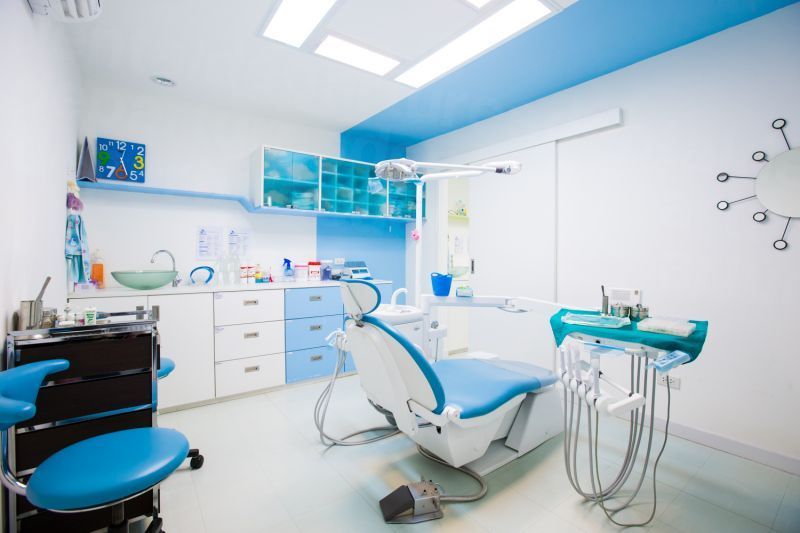Imagine walking into your doctor’s office. For a moment, take in your surroundings. Do the chairs provide adequate support and comfort? Is the office layout efficient and intuitive? Does the environment contribute positively to your physical comfort and psychological wellbeing? If the answers to these questions are affirmative, then you have just experienced the advantages of ergonomically designed medical fitout. If not, it’s high time you understood the vital role that ergonomics plays in a medical setting, a topic we will be unearthing in depth in this post.
The term ‘Ergonomics’ refers to the study and design of environments in which people work to best suit their capabilities and limitations. In a medical fitout context, it ideally blends functionality, safety, and aesthetics to produce a conducive working environment for healthcare professionals while improving the experience of patients. This post is designed to dissect the importance of ergonomics in medical fitout, showcasing its tangible benefits and how to implement it effectively.
Healthcare facility design should not be taken lightly—it's not just about aesthetics. It has far-reaching implications that can profoundly impact the productivity of staff and the recovery of patients. With the pivotal role ergonomics play in medical fitouts Ringwood designs, the question is not whether we should incorporate ergonomic principles but rather, how can we implement them effectively?

Understanding the What and Why of Ergonomics in Medical Fitout Design
What is ergonomics in medical fitout design and why does it matter? Ergonomics in this context goes beyond providing comfortable furniture—it factors in the design of workstations, arrangement of equipment, lighting, and even the choice of colours. Each is tailored to support efficient workflow and improve mental health, bringing us to why it is crucial.
It becomes essential because it contributes to staff’s efficiency, reduces safety risks, and enhances patient care. An ergonomic setup brings with it the advantages of staff satisfaction, fewer sick leaves due to work-related injuries, improved patient outcomes, and, consequently, better overall reputation for the healthcare facility.
The Role of Ergonomics in Reducing Work-Related Injuries
An essential aspect of ergonomics in medical fitouts is its contribution to reducing work-related injuries among healthcare staff. Insufficient ergonomic considerations can lead to musculoskeletal disorders, such as back pain, often linked to overexertion, awkward postures, or repetitive tasks. By incorporating ergonomics, we can design a safer, healthier work environment that lessens the likelihood of injuries, leading to improved job satisfaction and enhanced productivity.
Ergonomics and Patient Care
Improving patient care is a shared goal of healthcare providers worldwide. Through ergonomic design, this is achievable in more ways than one. Better-designed furniture and medical equipment cater to patients' physical comfort, impacting their overall experience and attitudes towards medical facilities. Plus, efficient workflows allow healthcare professionals to provide timely and effective care, thereby improving patient satisfaction and recovery success rates.
The Biophilic Approach: Merging Nature with Ergonomics
This unique approach roots from the concept of ‘Biophilia’, which denotes the human desire to connect with nature, which has been credited with improving mental wellness. Applying biophilic design in a medical fitout adds another depth of comfort for patients and staff alike, creating an environmental synergy that enhances productivity, eases recovery, and promotes overall wellbeing.
Cost-effectiveness of Ergonomics
While there may be initially higher costs associated with implementing ergonomic design principles, it is a worthy investment. An ergonomic medical fitout can save healthcare providers in the long run through reduced workers' compensation claims, fewer sick leaves, and improved staff retention. Plus, a comfortable healthcare environment can increase the number of patient visits, leading to higher profitability.
Incorporating Ergonomics: The Possible Challenges
Every worthwhile journey encounters some hurdles. Similarly, incorporating ergonomics into medical fitout may come with challenges like the cost of new furniture and modifications, resistance from staff to change, or lack of knowledge on best ergonomic practices. Overcoming these obstacles requires commitment, education, and persistence.

Conclusion
At the heart of patient care lies the importance of a healthful, conducive environment that promotes the physical comfort of patients, mental wellness, and efficient operations. This is where the role of ergonomics in medical fitout becomes more conspicuous.
As we gradually unlock ways to enhance healthcare delivery, we should further navigate the biome of ergonomics, appreciating its significant contributions to reducing work-related injuries, improving patient care, and creating a comforting biophilic environment. And while reaping these benefits might be faced with challenges and initial costs, the long-term gains far overshadow the preliminary investments.
In the end, remember that the physical environment of a healthcare facility speaks volumes. Hence, as healthcare providers, make your environment tell a story of efficiency, safety, comfort, and high-quality patient care through adept application of ergonomic principles in your medical fitout design.



.jpg)



0 Comments